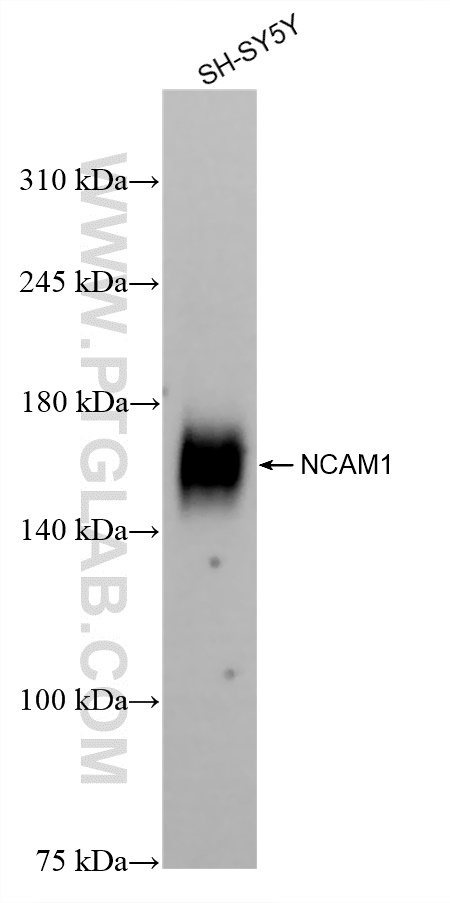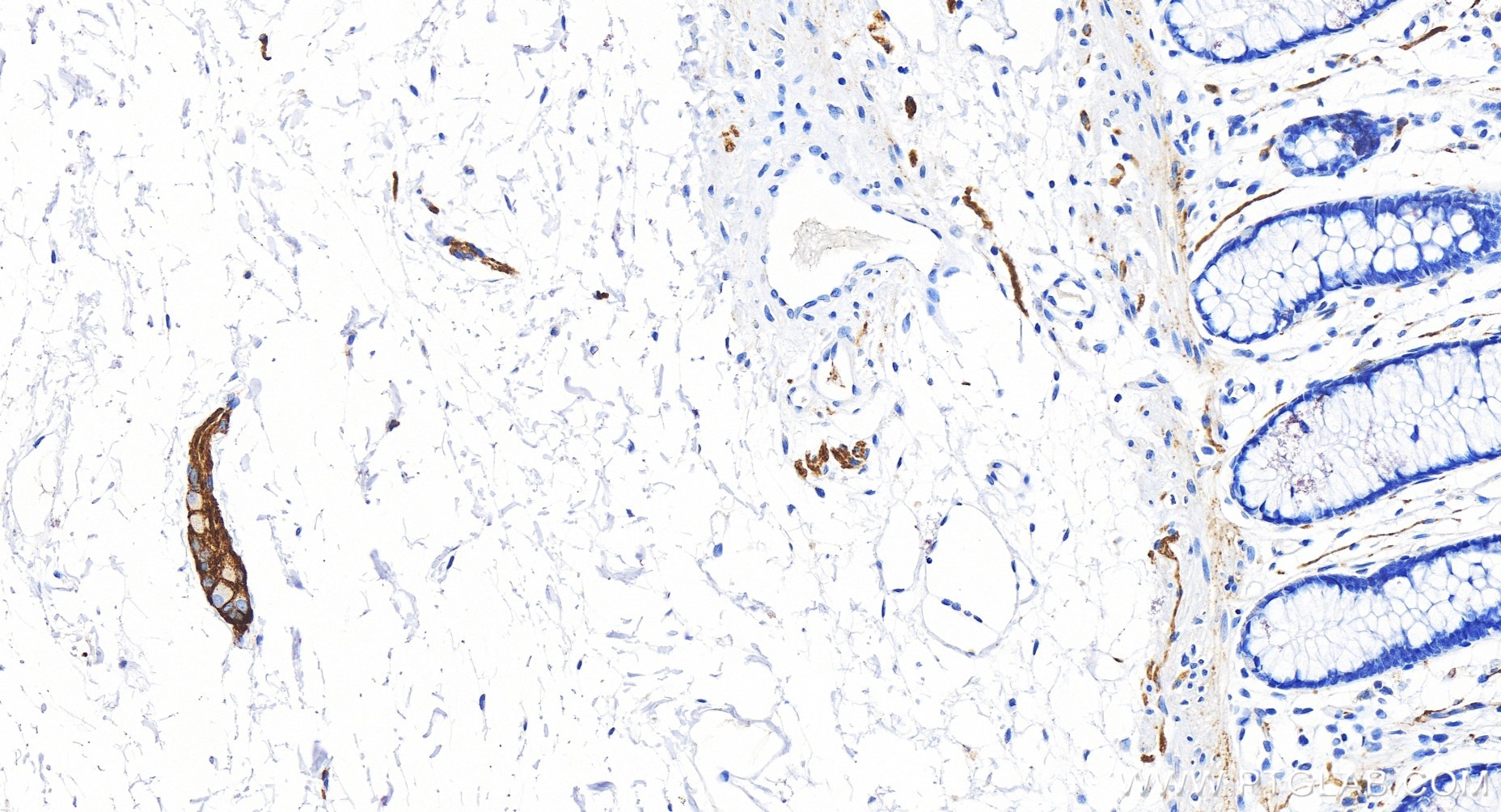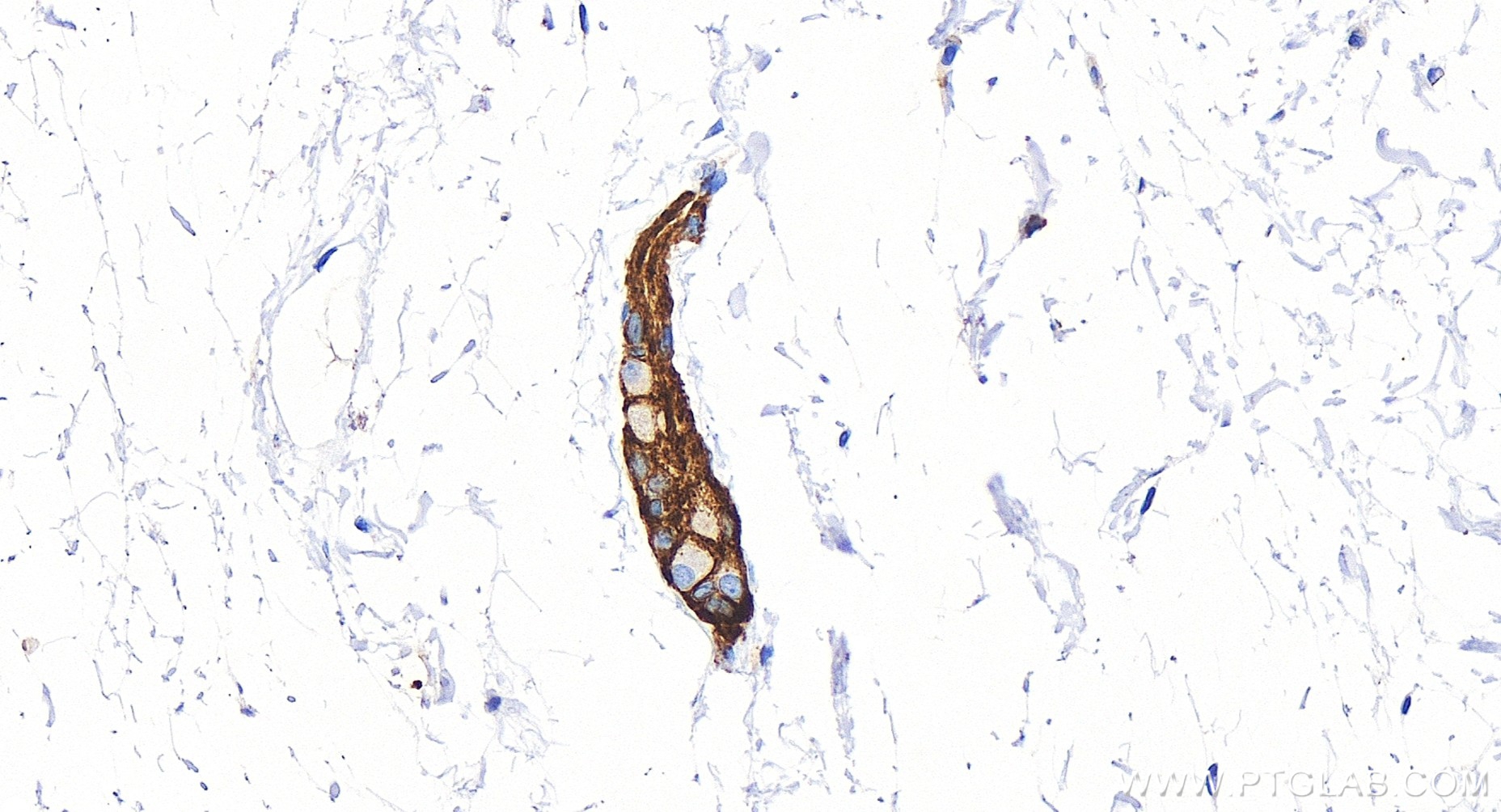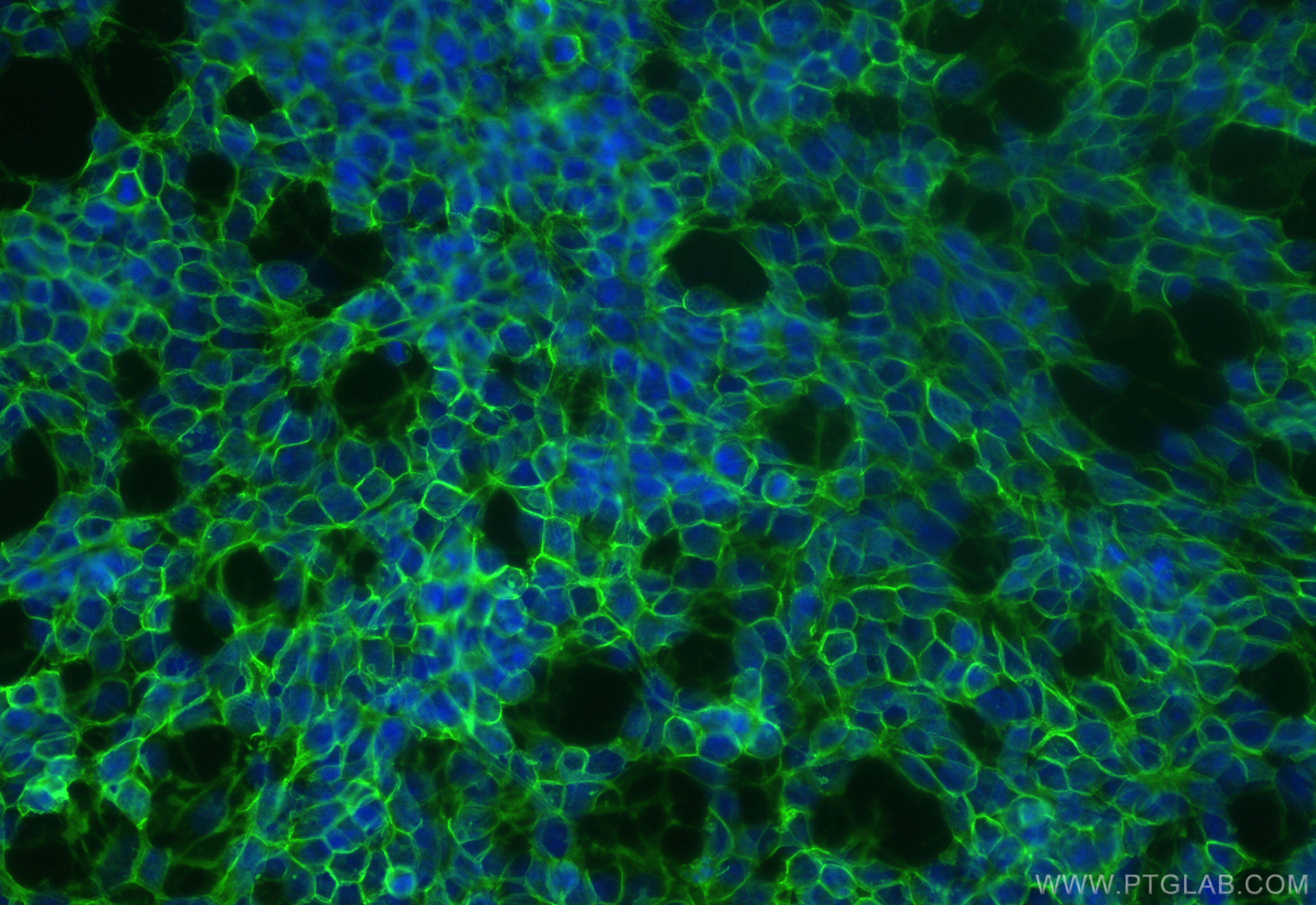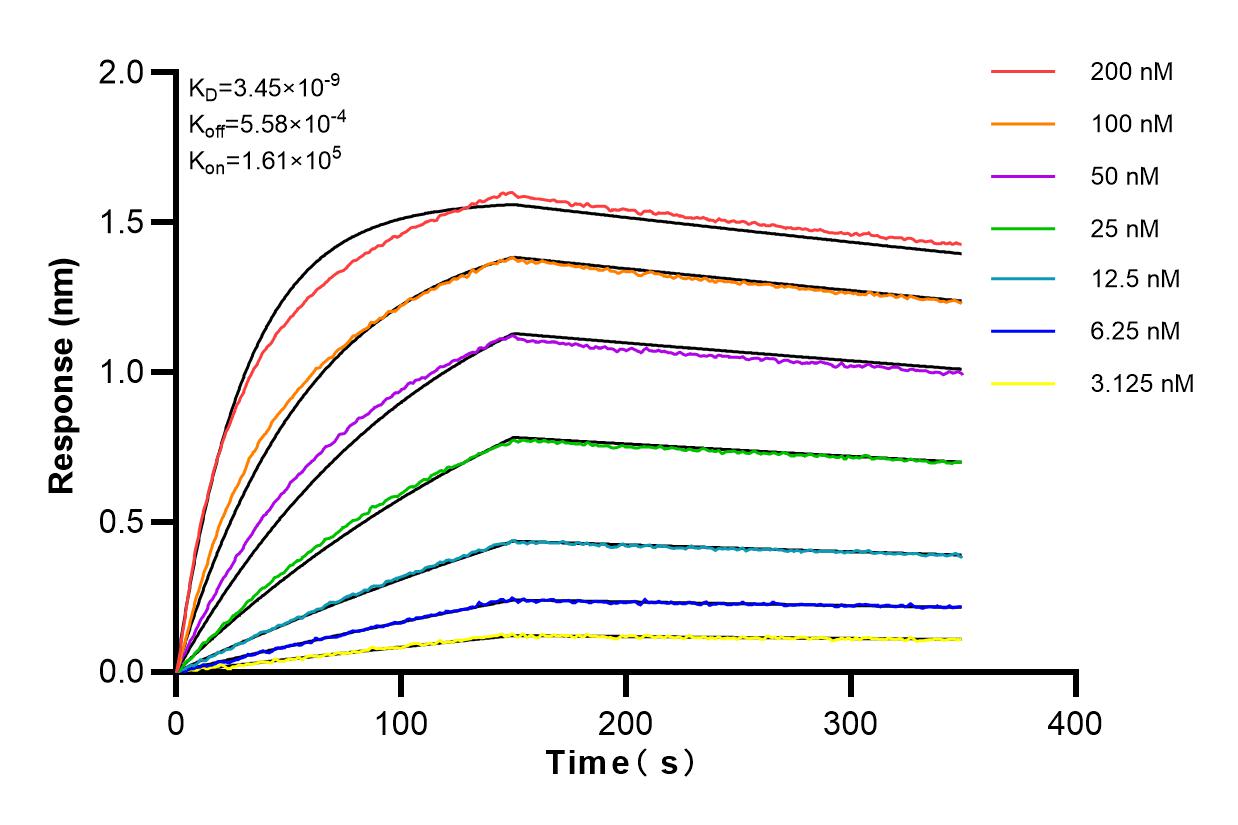验证数据展示
产品信息
83365-6-PBS targets NCAM1/CD56 in WB, IHC, IF/ICC, ELISA applications and shows reactivity with human samples.
| 经测试应用 | WB, IHC, IF/ICC, ELISA Application Description |
| 经测试反应性 | human |
| 免疫原 |
CatNo: Eg31816 Product name: Recombinant Human NCAM-1/CD56 protein (Myc Tag, His Tag) Source: mammalian cells-derived, pHZ-KIsec Tag: Myc & 6*His Domain: 20-718 aa of BC047244 Sequence: LQVDIVPSQGEISVGESKFFLCQVAGDAKDKDISWFSPNGEKLTPNQQRISVVWNDDSSSTLTIYNANIDDAGIYKCVVTGEDGSESEATVNVKIFQKLMFKNAPTPQEFREGEDAVIVCDVVSSLPPTIIWKHKGRDVILKKDVRFIVLSNNYLQIRGIKKTDEGTYRCEGRILARGEINFKDIQVIVNVPPTIQARQNIVNATANLGQSVTLVCDAEGFPEPTMSWTKDGEQIEQEEDDEKYIFSDDSSQLTIKKVDKNDEAEYICIAENKAGEQDATIHLKVFAKPKITYVENQTAMELEEQVTLTCEASGDPIPSITWRTSTRNISSEEKASWTRPEKQETLDGHMVVRSHARVSSLTLKSIQYTDAGEYICTASNTIGQDSQSMYLEVQYAPKLQGPVAVYTWEGNQVNITCEVFAYPSATISWFRDGQLLPSSNYSNIKIYNTPSASYLEVTPDSENDFGNYNCTAVNRIGQESLEFILVQADTPSSPSIDQVEPYSSTAQVQFDEPEATGGVPILKYKAEWRAVGEEVWHSKWYDAKEASMEGIVTIVGLKPETTYAVRLAALNGKGLGEISAASEFKTQPVQGEPSAPKLEGQMGEDGNSIKVNLIKQDDGGSPIRHYLVRYRALSSEWKPEIRLPSGSDHVMLKSLDWNAEYEVYVVAENQQGKSKAAHFVFRTSAQPTAIPANGSPTSG 种属同源性预测 |
| 宿主/亚型 | Rabbit / IgG |
| 抗体类别 | Recombinant |
| 产品类型 | Antibody |
| 全称 | neural cell adhesion molecule 1 |
| 别名 | CD56, NCAM1, 240078C9, MSK39, N CAM 1 |
| 计算分子量 | 95 kDa |
| 观测分子量 | 160 kDa |
| GenBank蛋白编号 | BC047244 |
| 基因名称 | NCAM1 |
| Gene ID (NCBI) | 4684 |
| ENSEMBL Gene ID | ENSG00000149294 |
| 偶联类型 | Unconjugated |
| 形式 | Liquid |
| 纯化方式 | Protein A purfication |
| UNIPROT ID | P13591 |
| 储存缓冲液 | PBS only, pH 7.3. |
| 储存条件 | Store at -80°C. The product is shipped with ice packs. Upon receipt, store it immediately at -80°C |
背景介绍
Neural cell adhesion molecule 1 (NCAM1, also known as CD56) is a cell adhesion glycoprotein of the immunoglobulin (Ig) superfamily. It is a multifunction protein involved in synaptic plasticity, neurodevelopment, and neurogenesis. NCAM1 is expressed on human neurons, glial cells, skeletal muscle cells, NK cells and a subset of T cells, and the expression is observed in a wide variety of human tumors, including myeloma, myeloid leukemia, neuroendocrine tumors, Wilms' tumor, neuroblastoma, and NK/T cell lymphomas. Three major isoforms of NCAM1, with molecular masses of 120, 140, and 180 kDa, are generated by alternative splicing of mRNA (PMID: 9696812). The glycosylphosphatidylinositol (GPI)-anchored NCAM120 and the transmembrane NCAM140 and NCAM180 consist of five Ig-like domains and two fibronection-type III repeats (FNIII). All three forms can be posttranslationally modified by addition of polysialic acid (PSA) (PMID: 14976519). Several other isofroms have also been described (PMID: 1856291).

